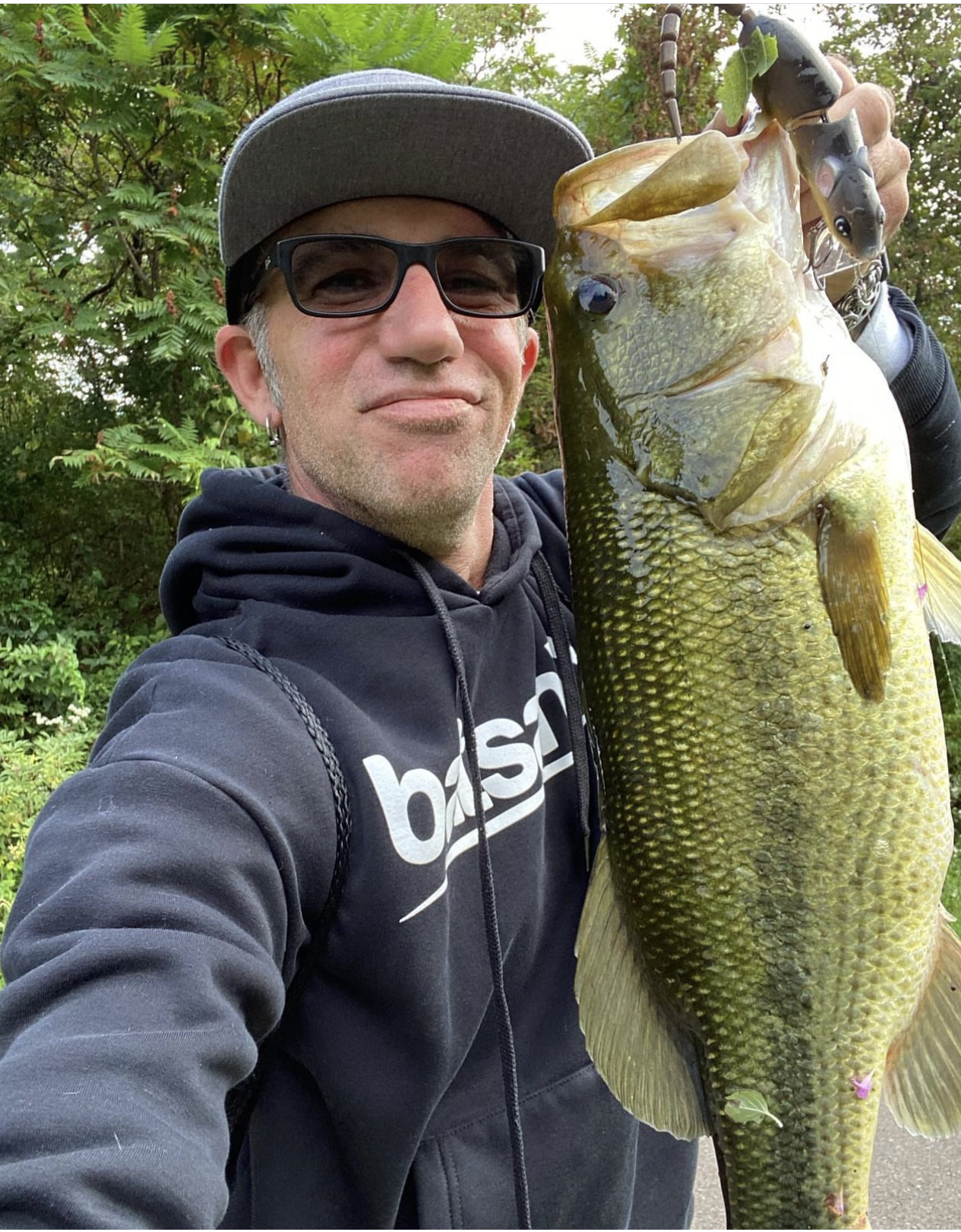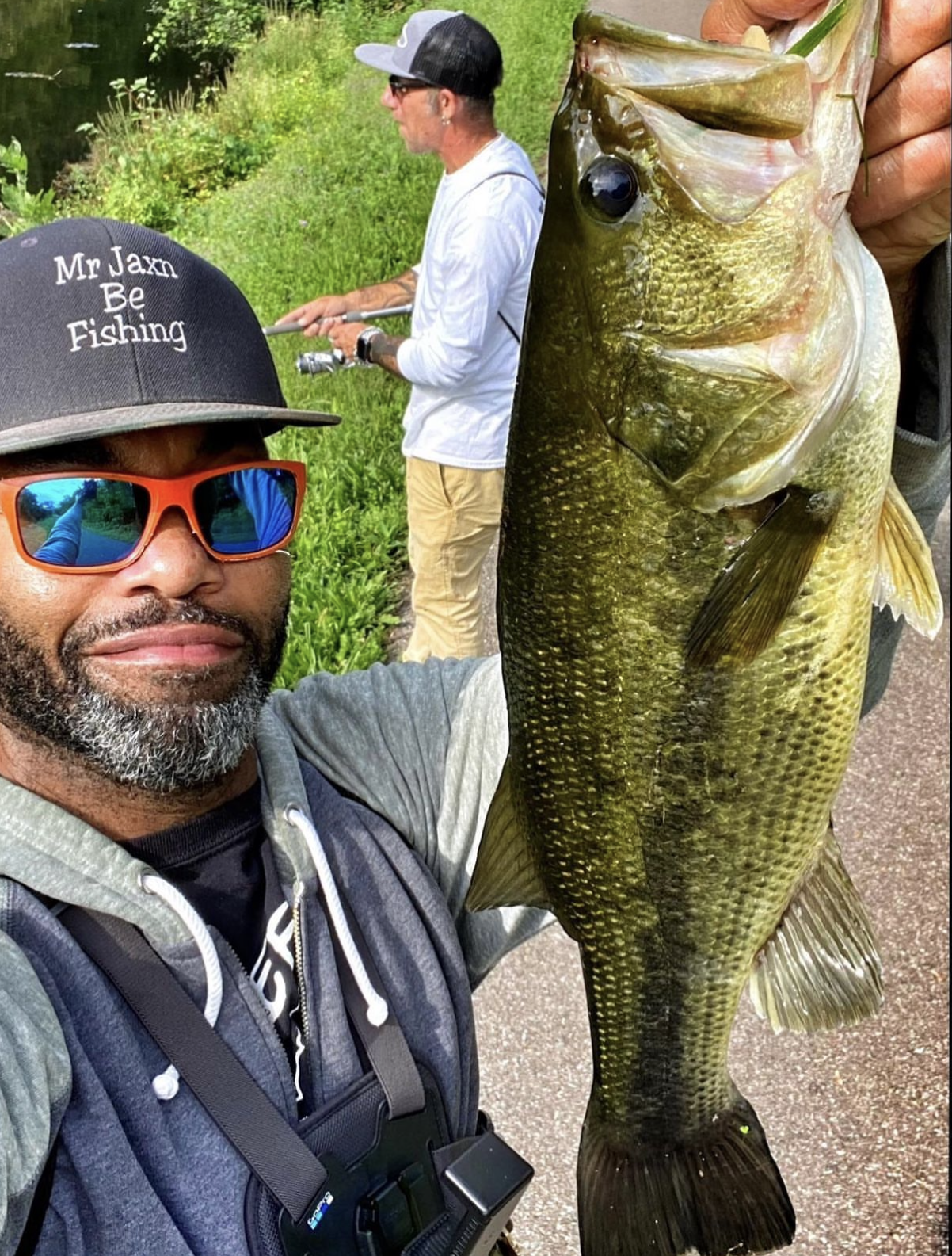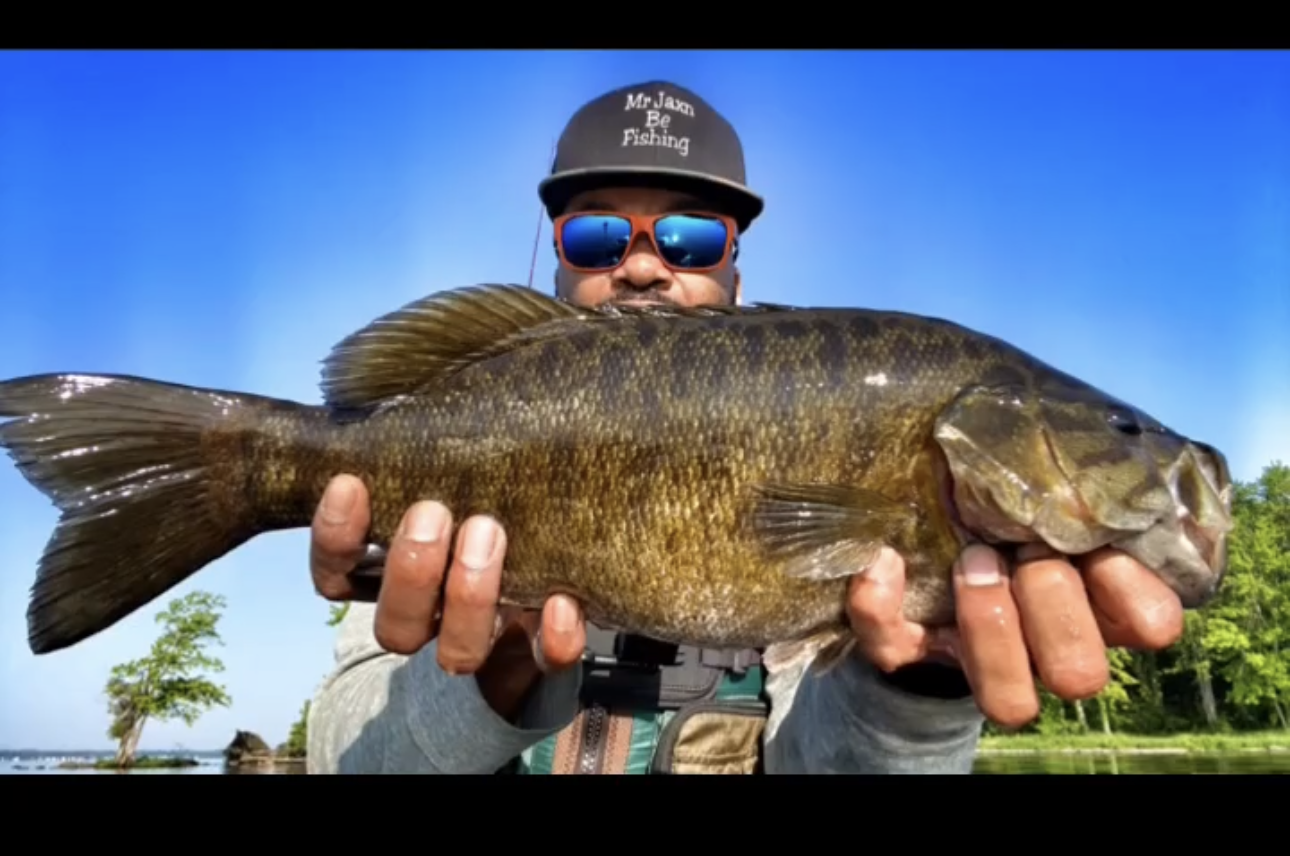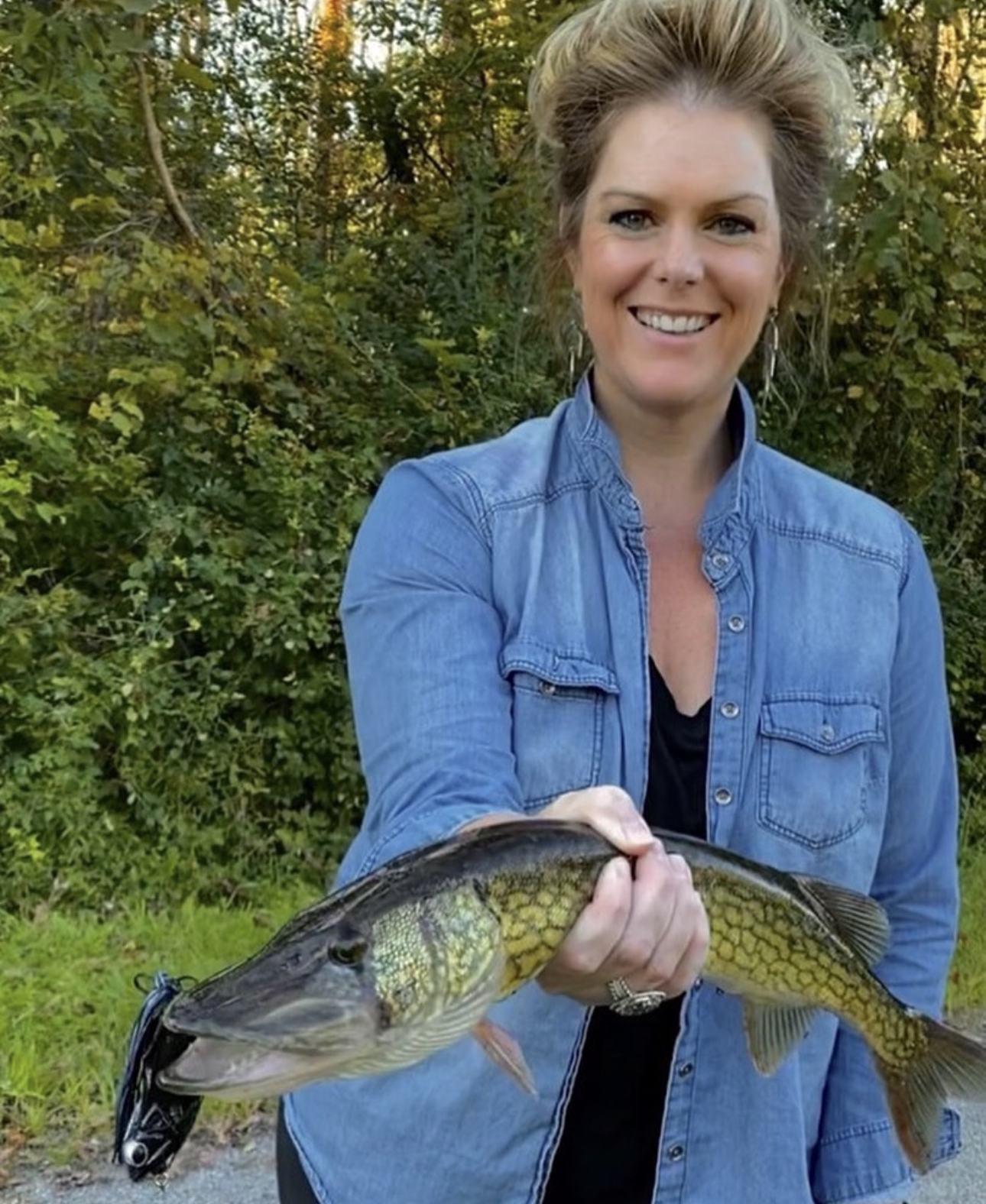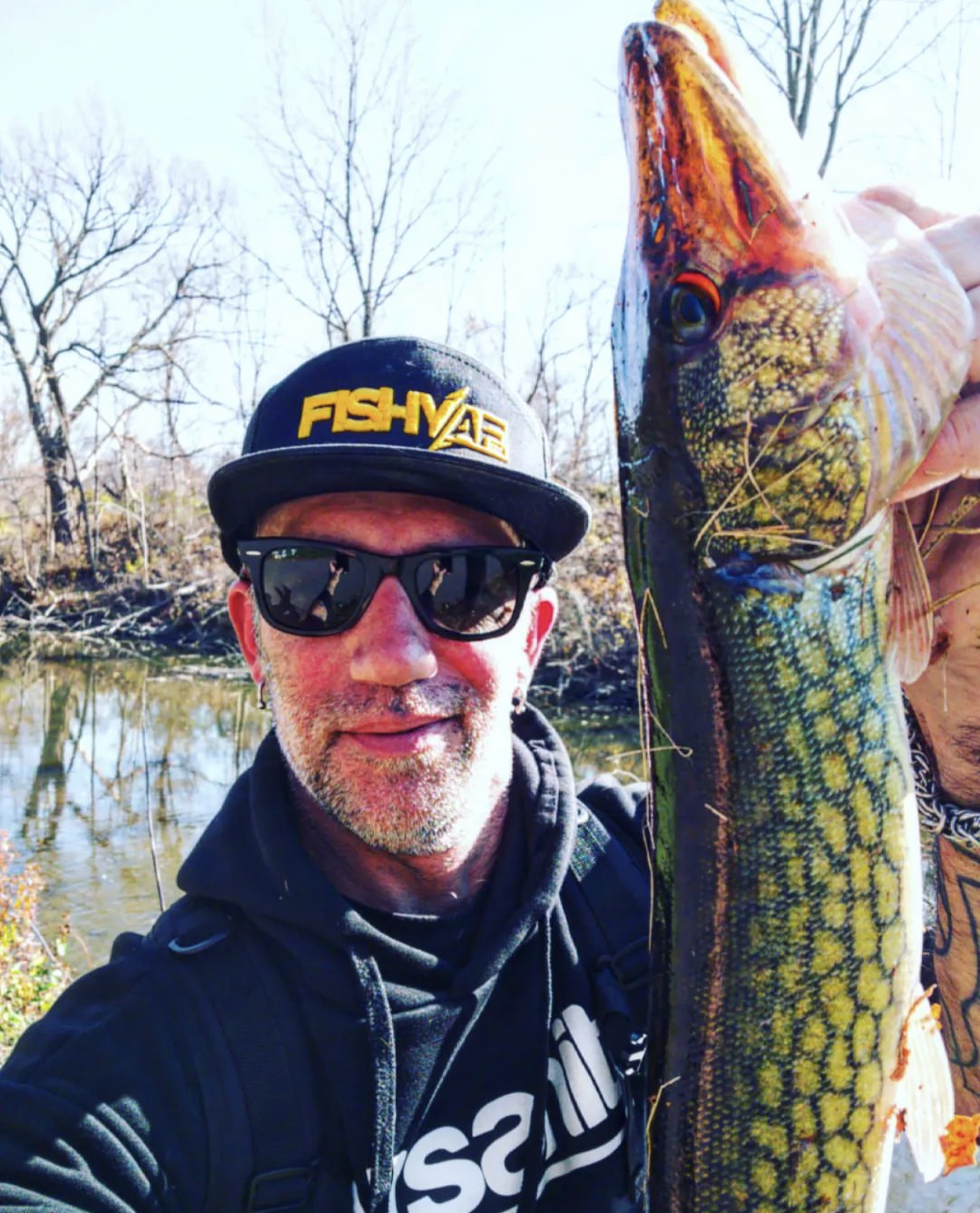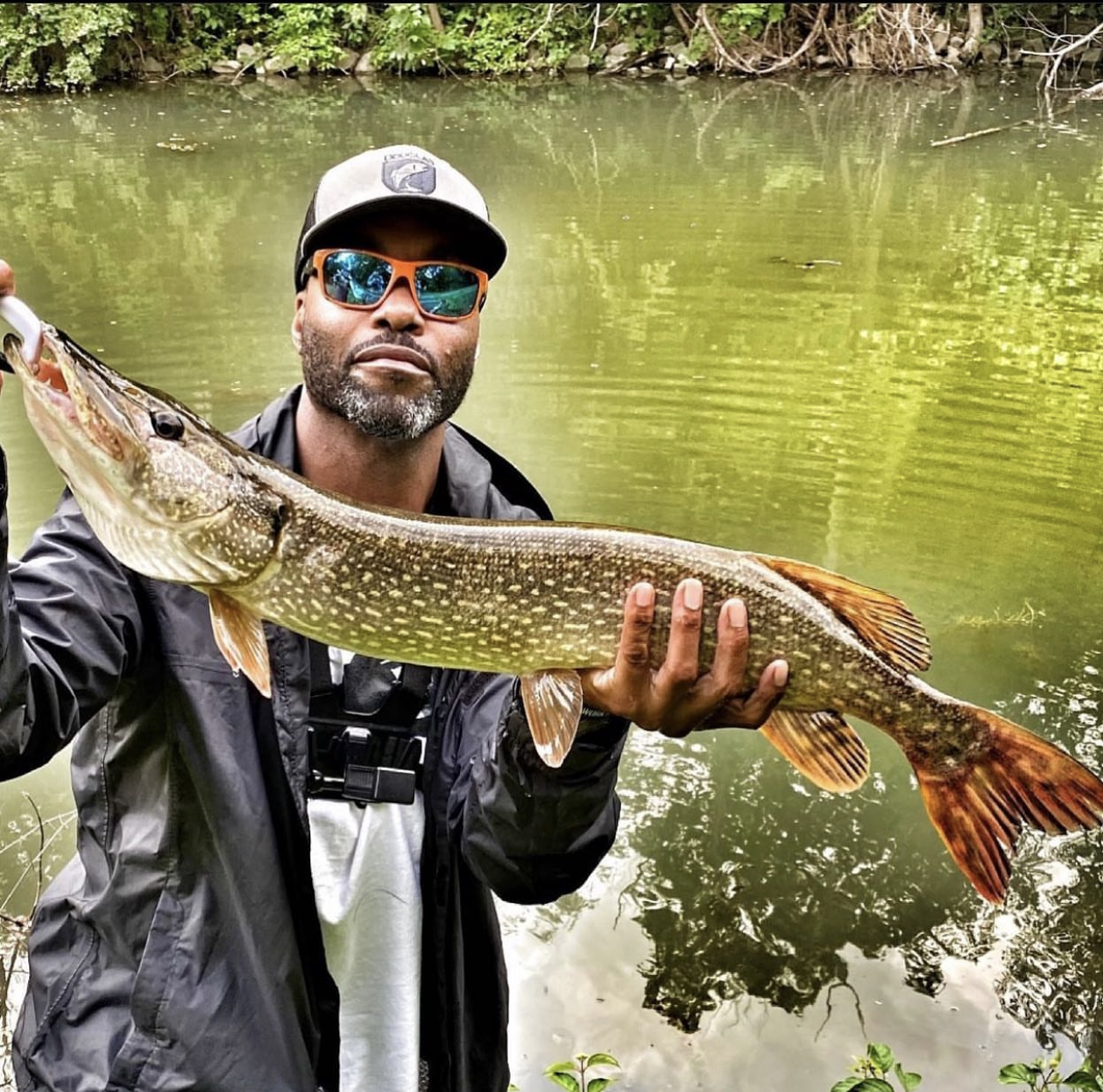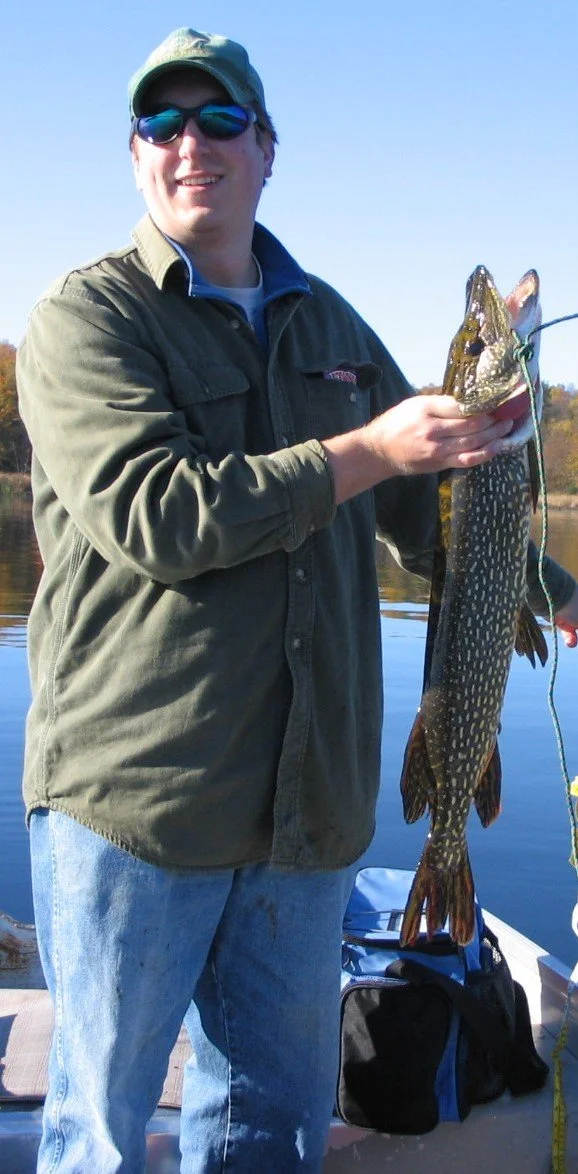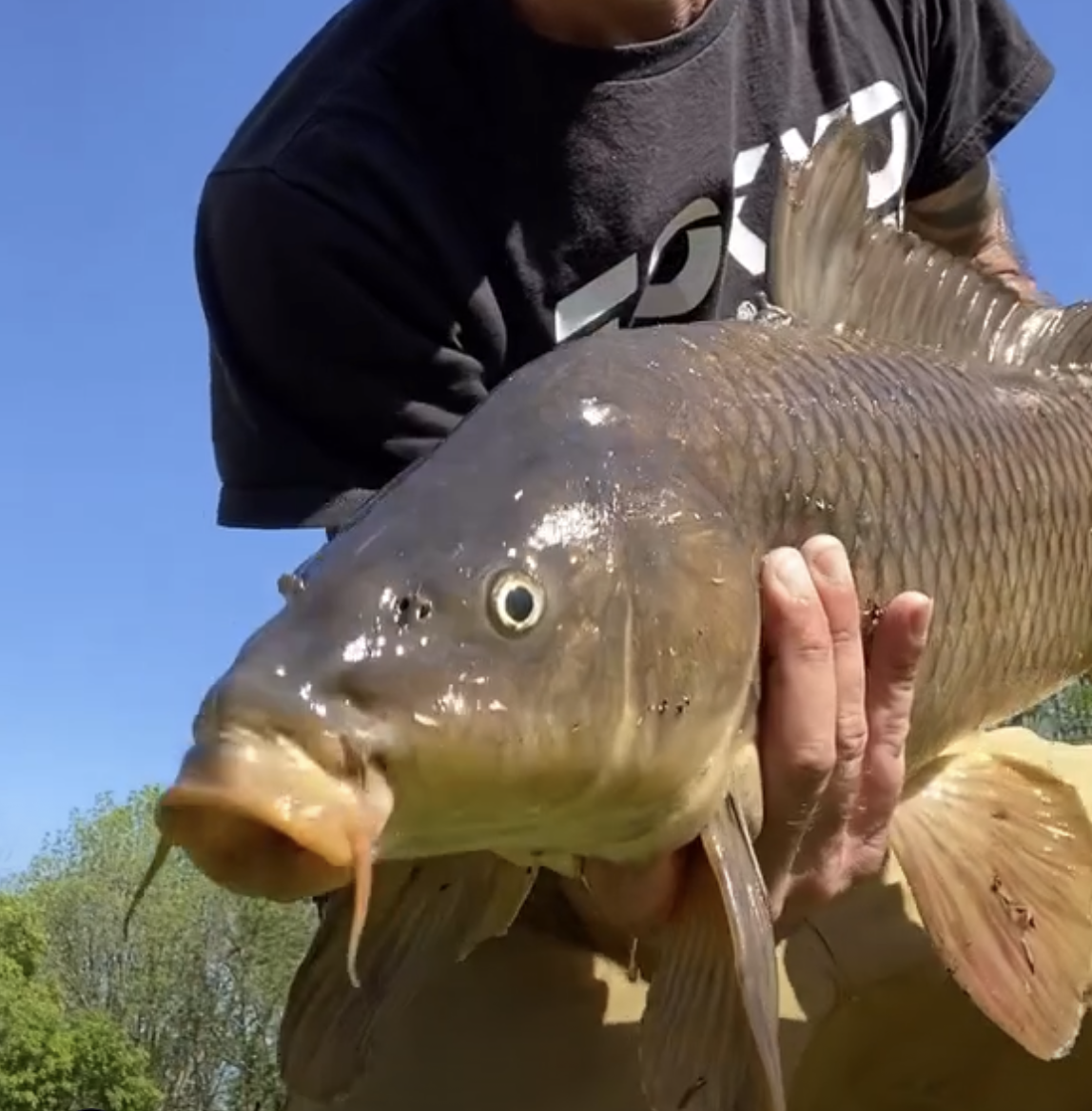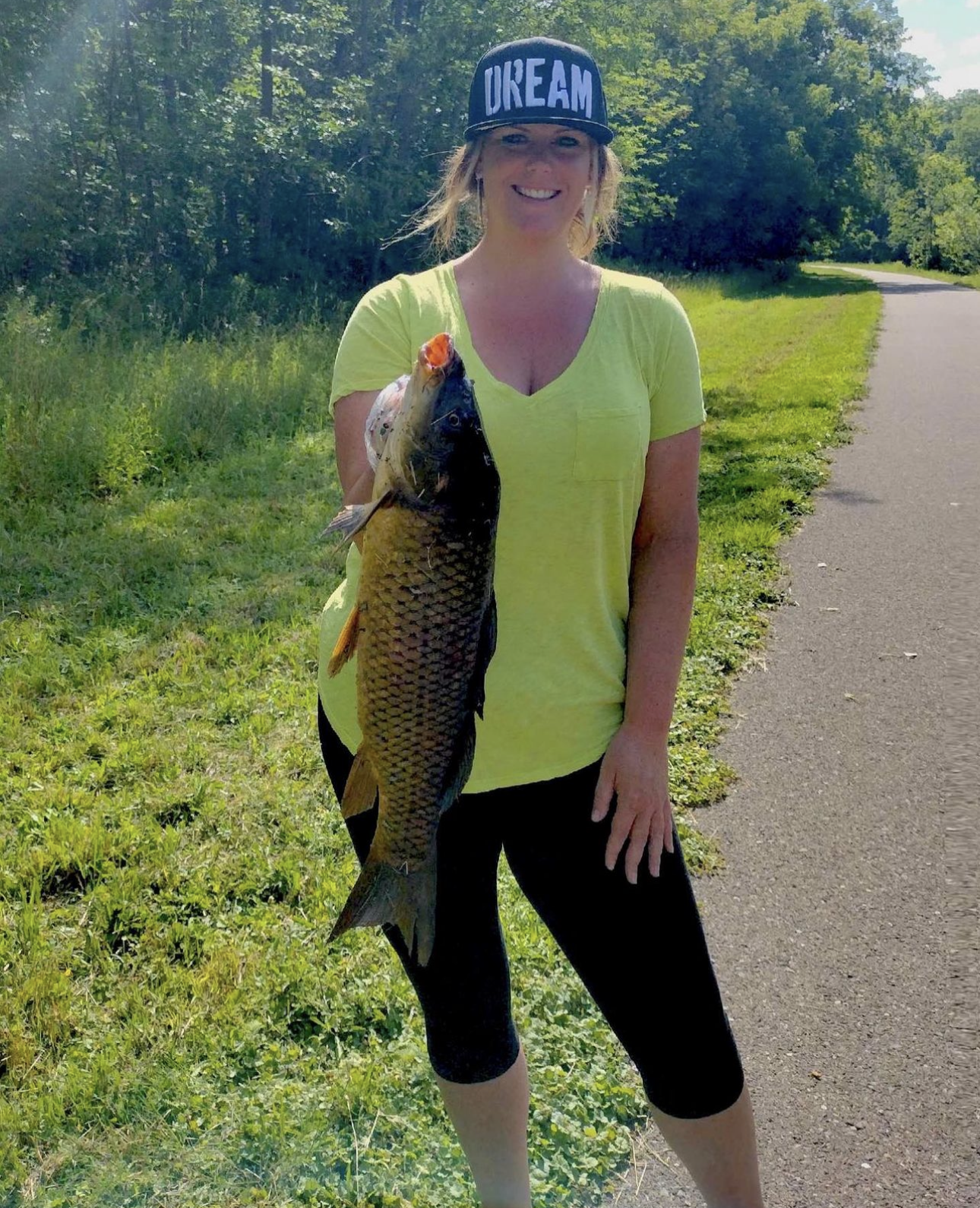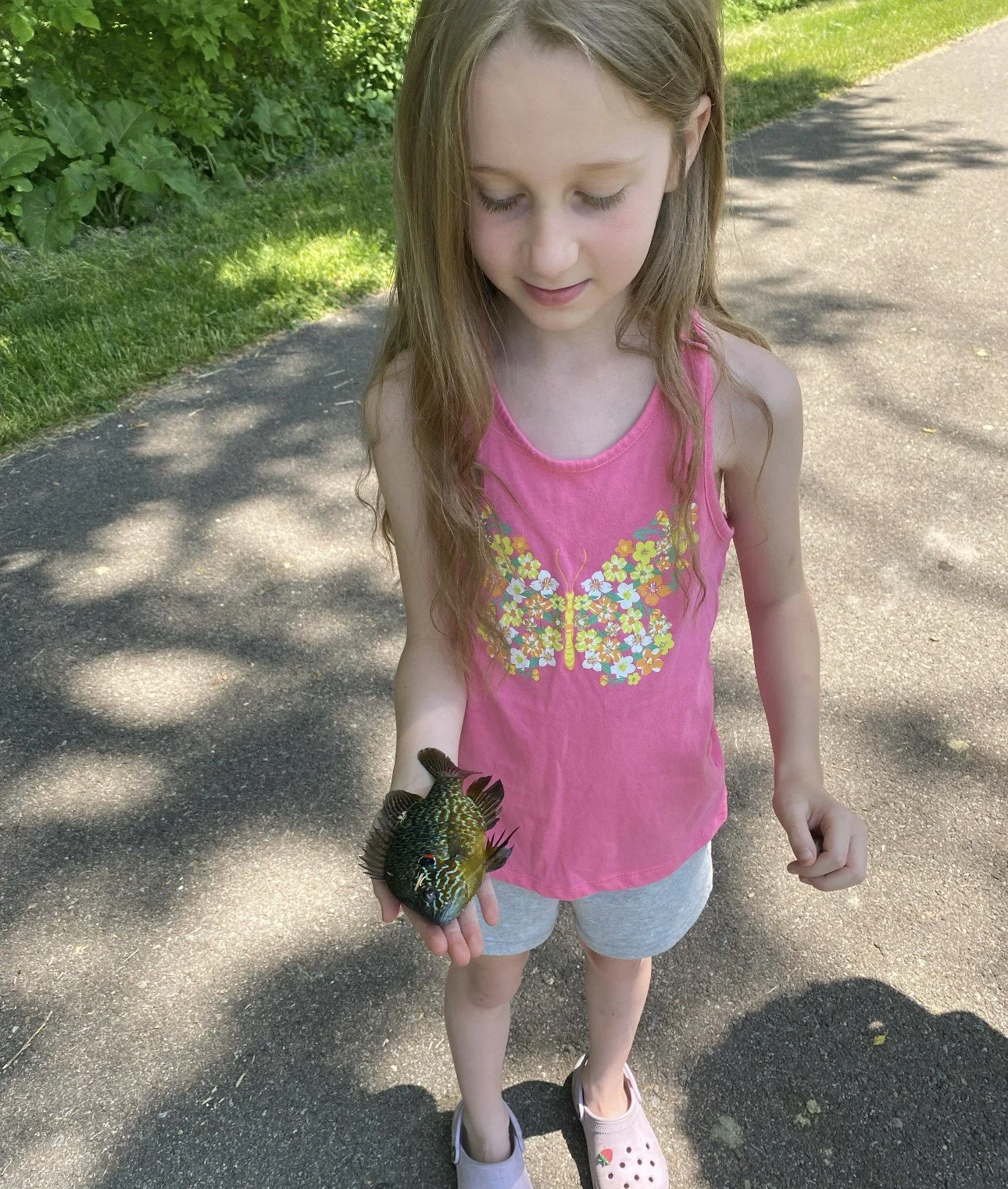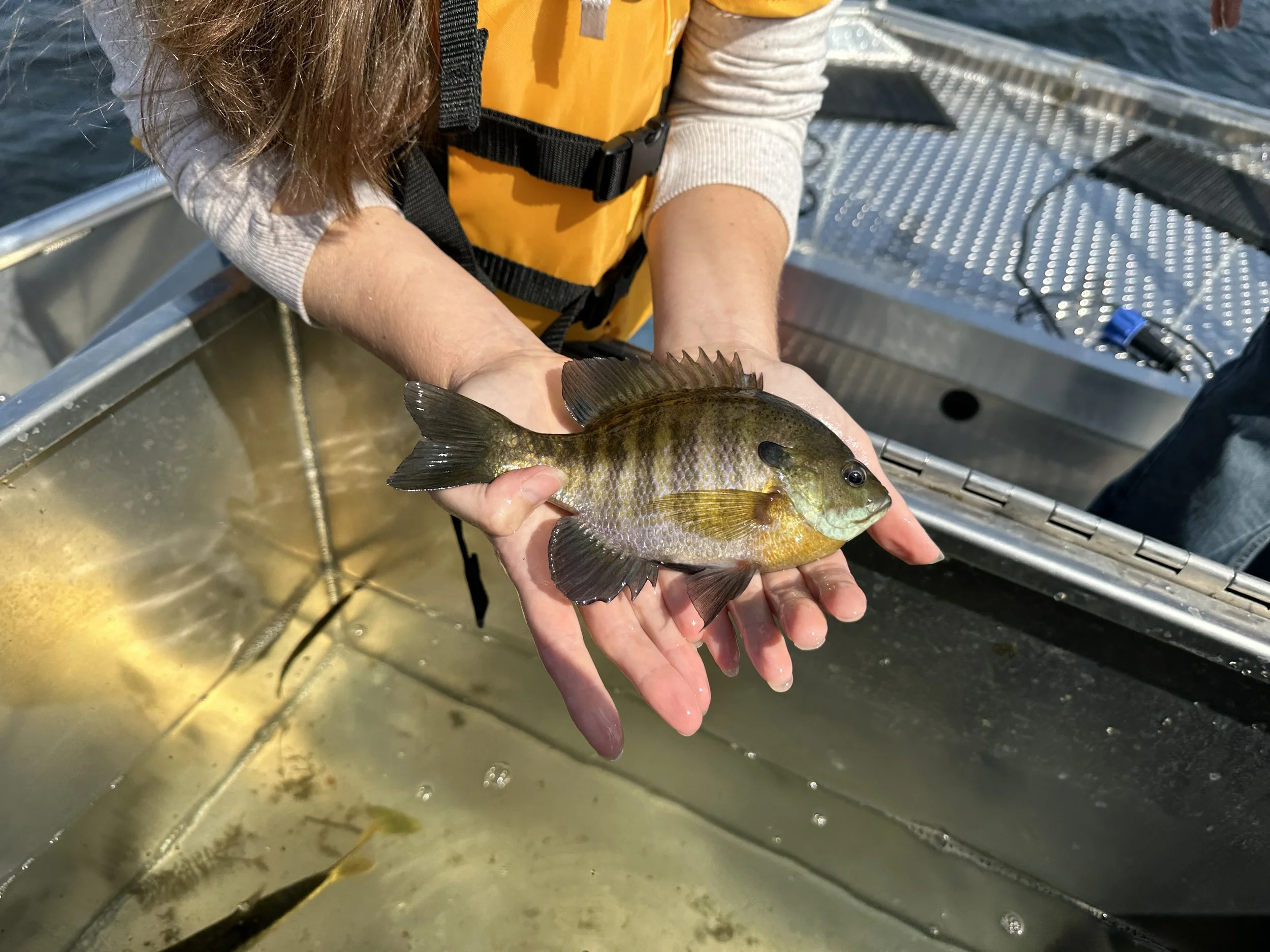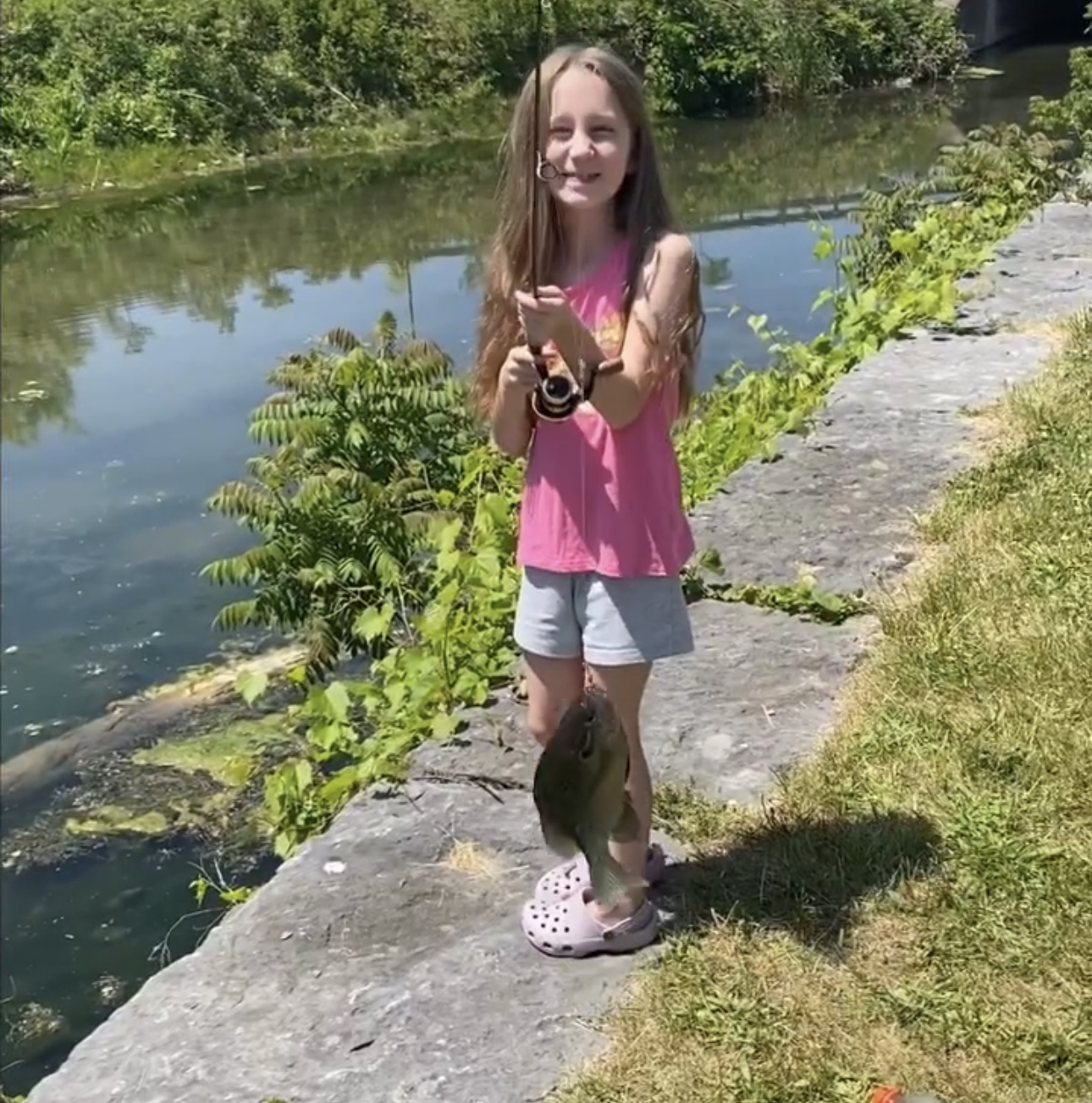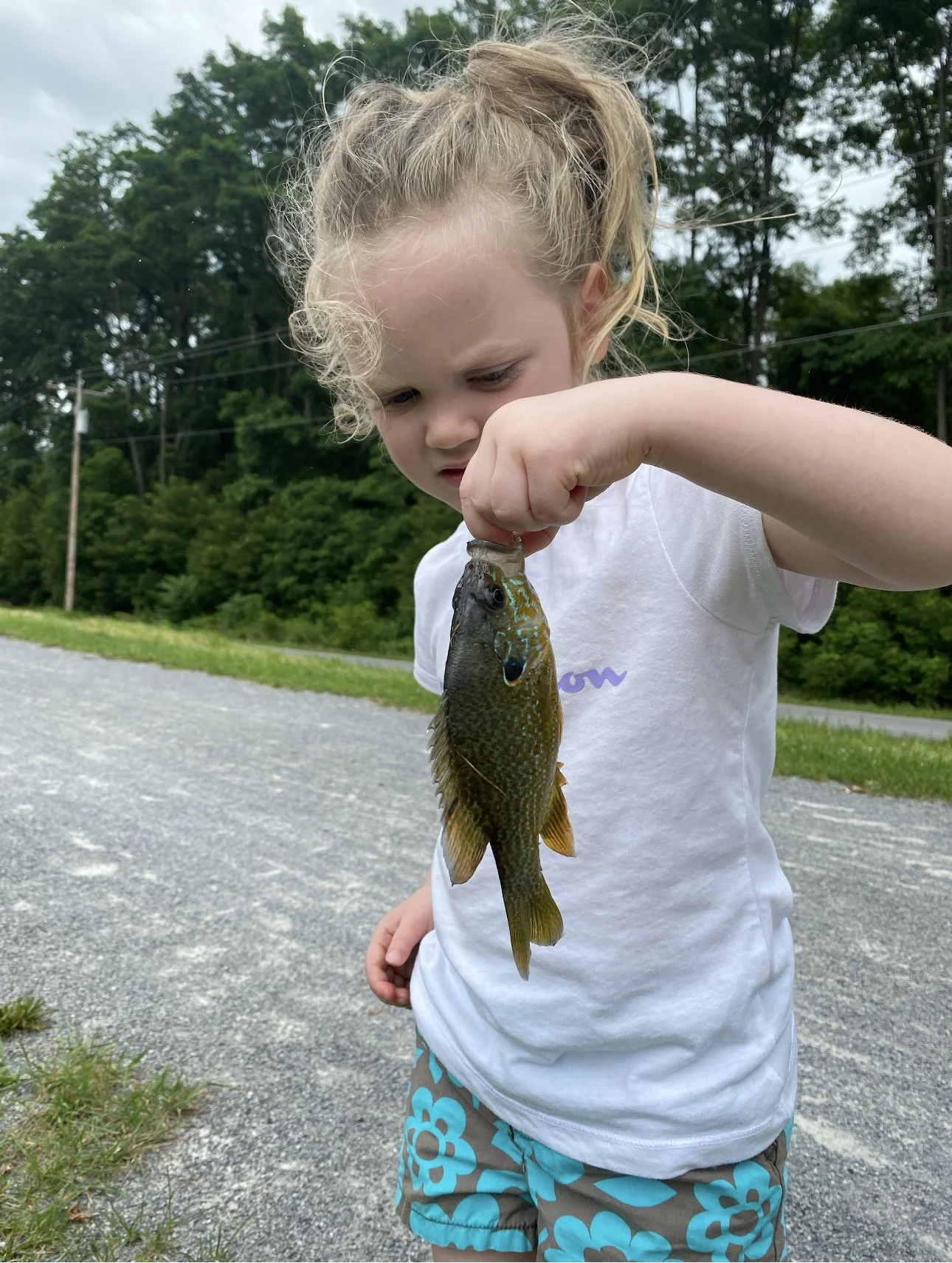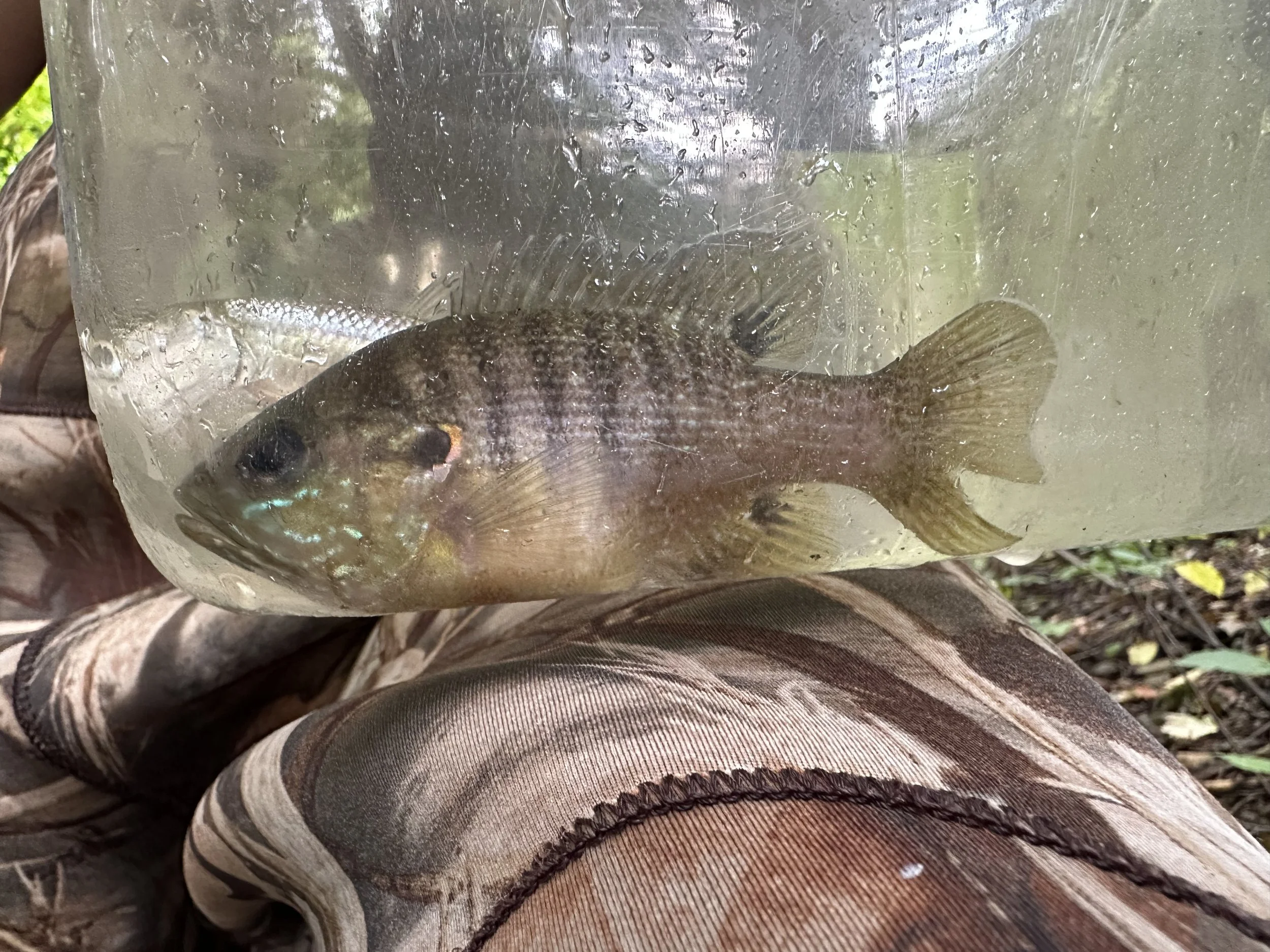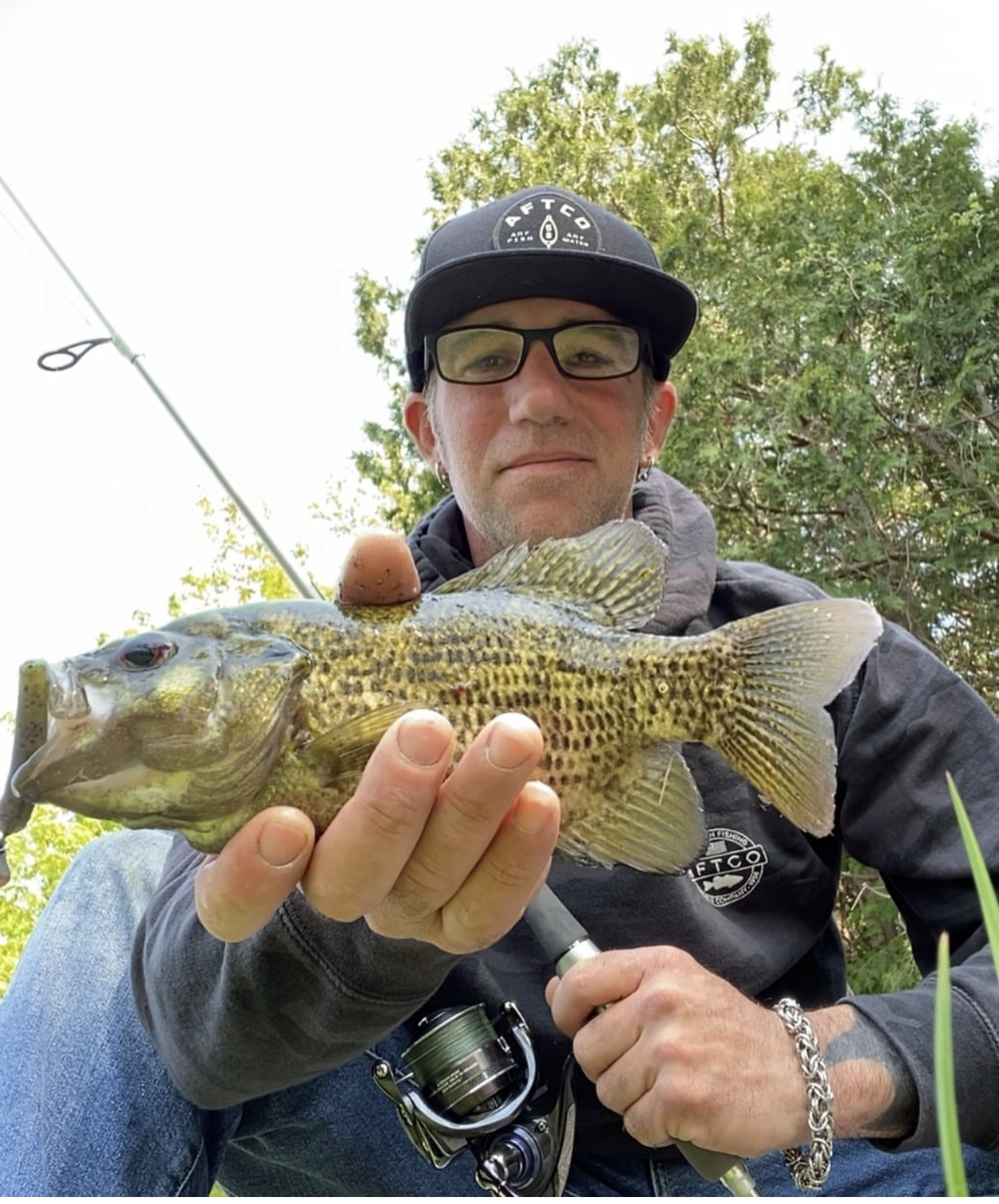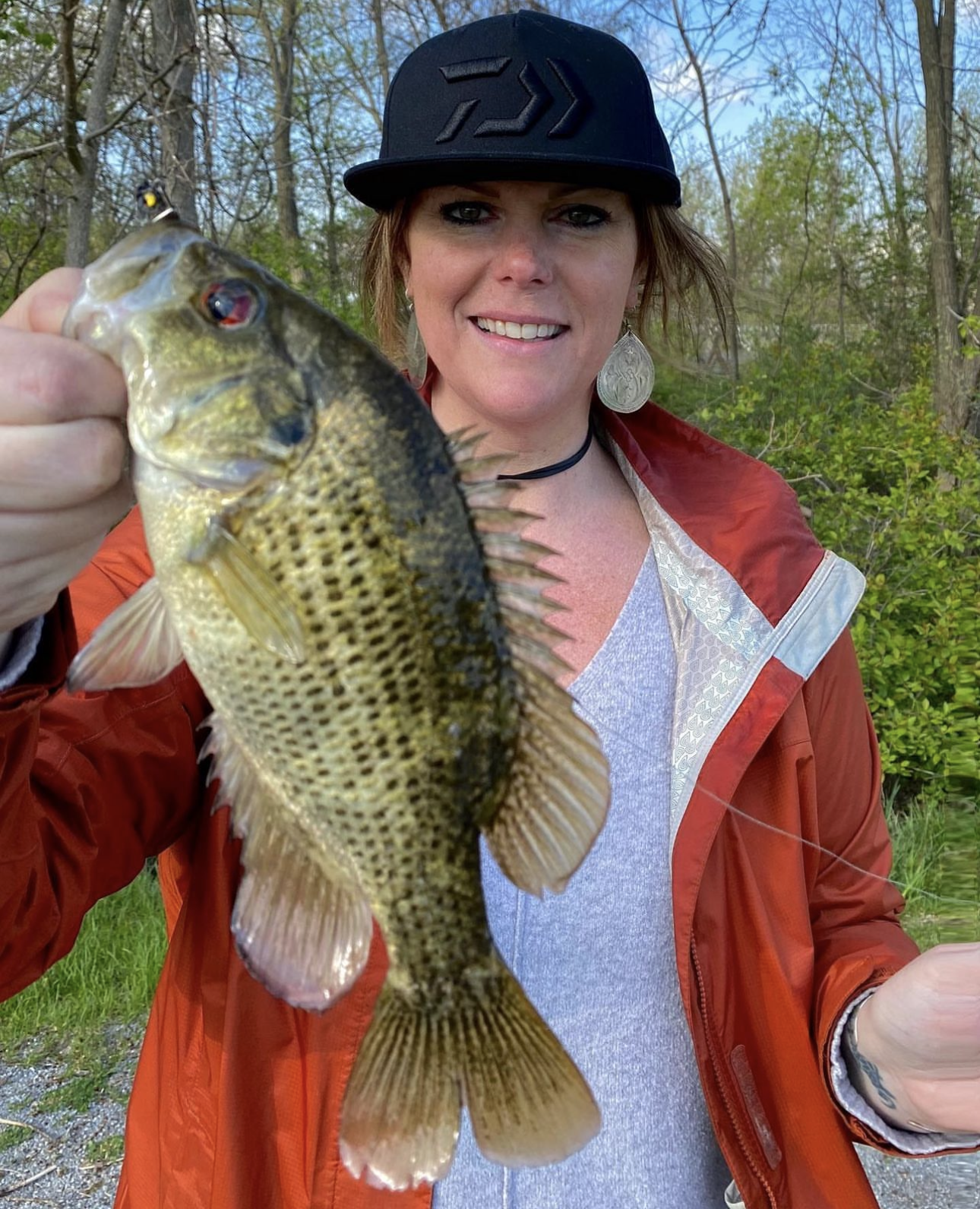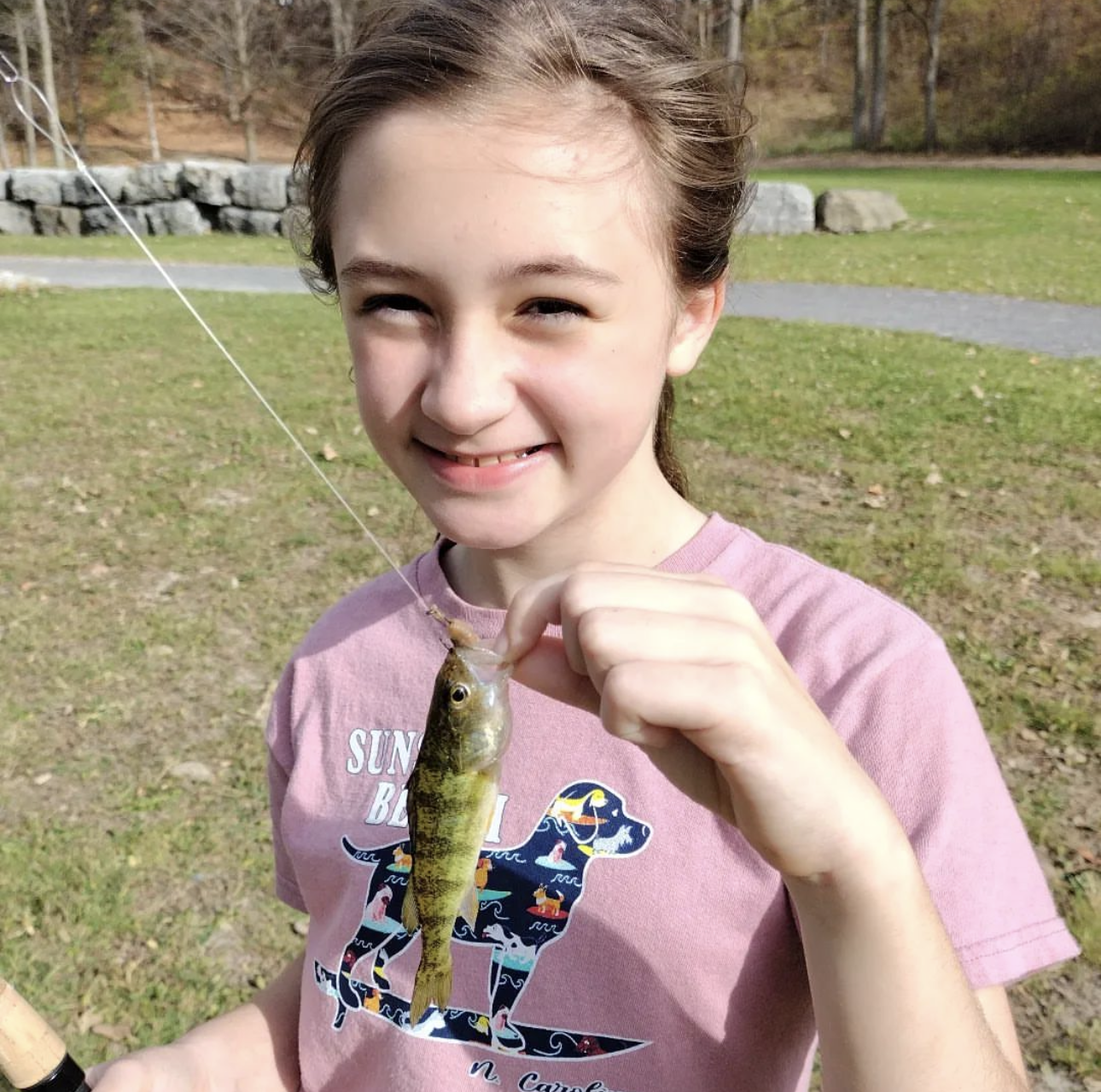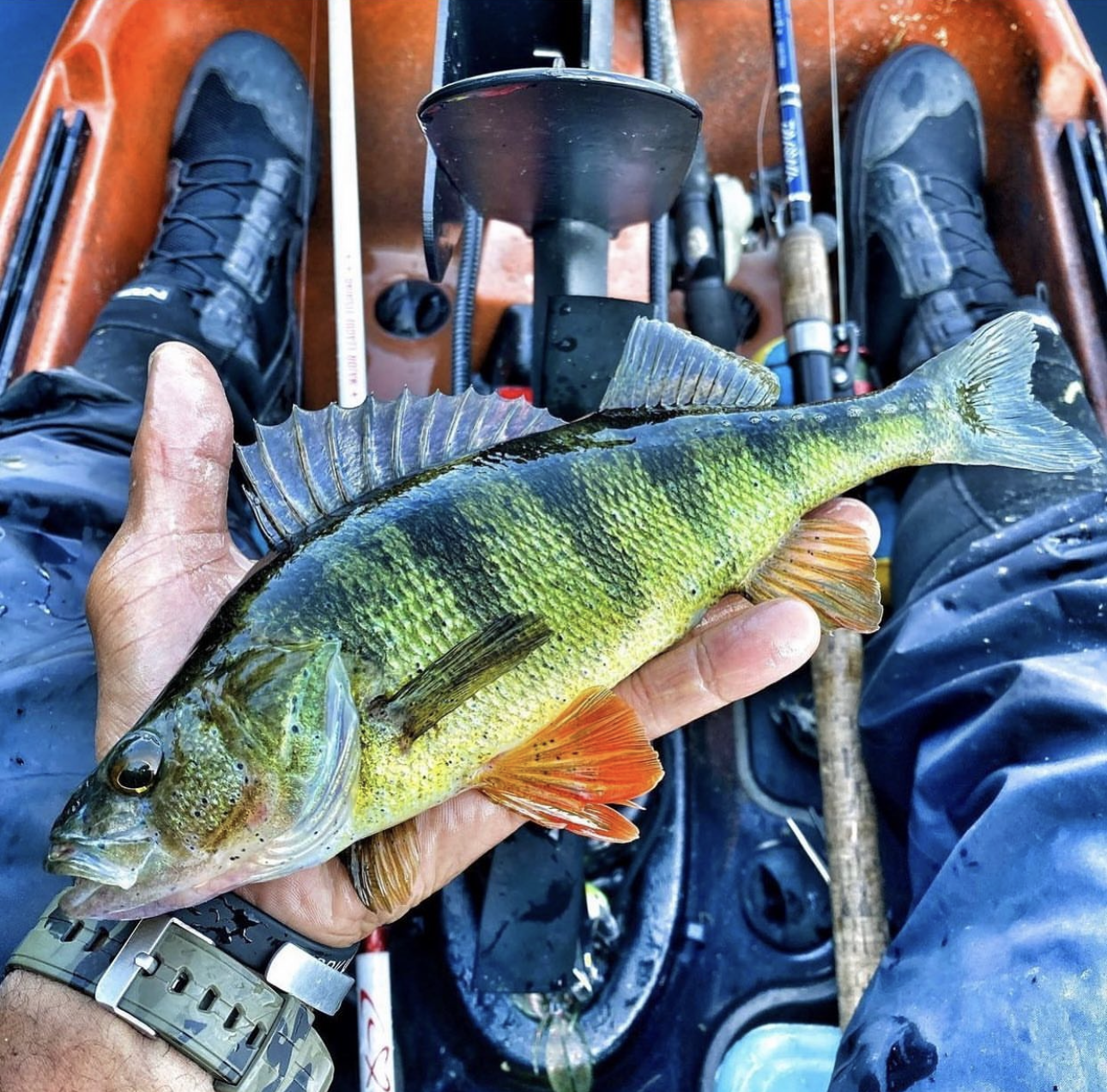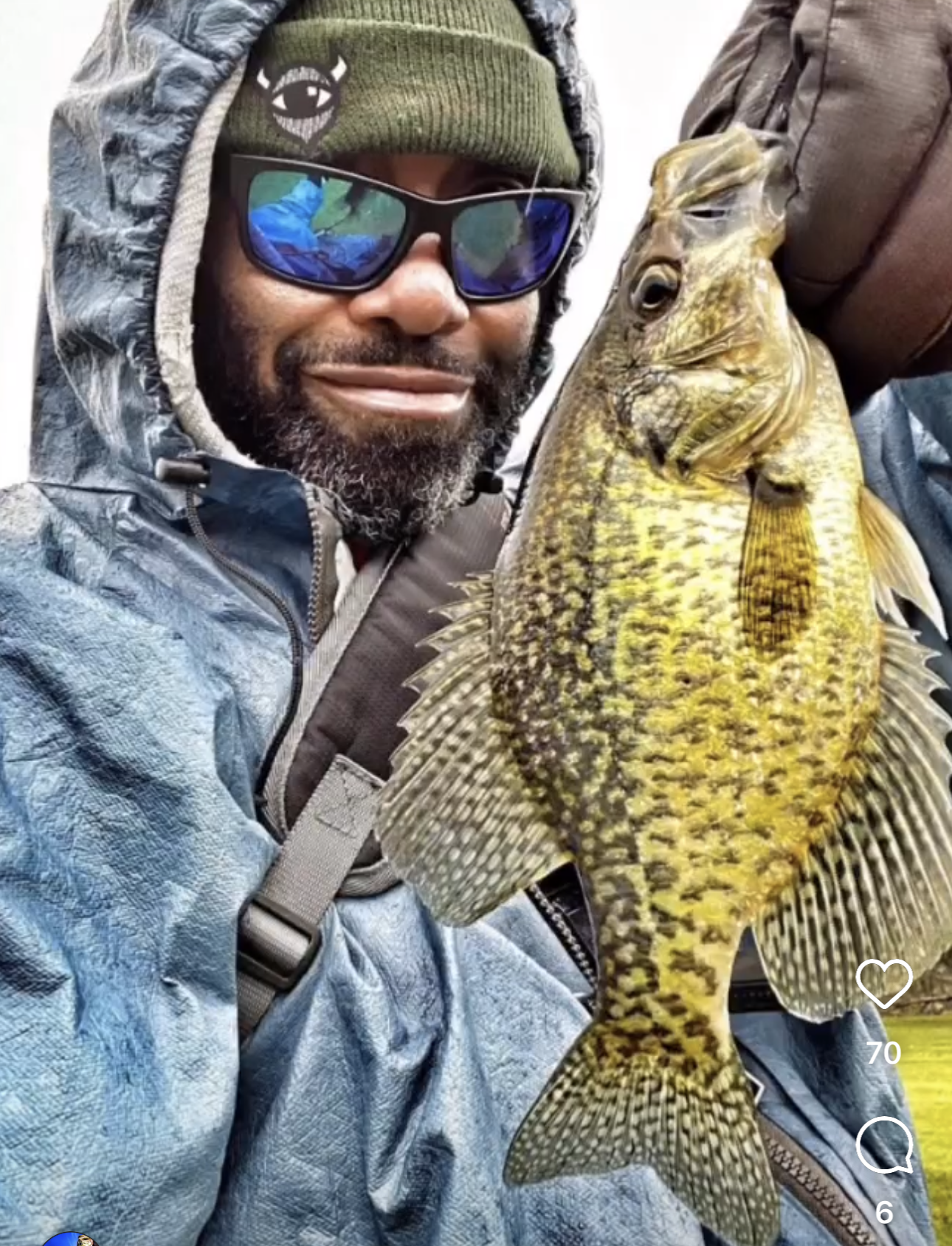Fish of the Old Erie Canal
Photos by Shoreline Monsters (Sean and Marcy) and mrJaXnBeFishing (Mr. Jaxn).
Largemouth Bass (Sunfish Family)
The canal offers much prime habitat for one of the most sought-after gamefish in the US. Largemouth have a dark horizontal stripe and an enormous mouth that, when closed, extends beyond the back of their eye. They’ll eat almost anything that gets close enough to their mouth. Our Largemouth and Smallmouth Bass are actually members of the Sunfish Family, much more closely related to Bluegill and Pumpkinseed than to Striped Bass (which belong to the “true” bass family).
Smallmouth Bass (Sunfish Family)
Not much of the canal would be considered classic smallmouth habitat, but the canal’s “smallies” never read the articles about where they are supposed to swim. Pound-for-pound, very few fish can match a smallmouth’s strength and energy when caught. Smallmouth (aka “bronze-backs”) often have dark vertical blotches on their sides, and the corner of their mouth does not extend past the middle of their eye.
Chain Pickerel (Pike Family)
Watching a pickerel swim like a torpedo at your lure from ten feet away is tough to beat. All members of the pike family tend to be quite slimy and a little smelly, but chain pickerel have kept many anglers from getting “skunked,” striking readily when other fish seem to be napping. They have a chain-link pattern on a light greenish-yellow background and appear to have a nearly-black “tear” under each eye.
Northern Pike (Pike Family)
Probably the largest native fish you’ll ever see in the canal, northern pike can be recognized by their light yellow dashes on a dark green background. Growing to sizes much larger than chain pickerel, pike eat whatever they can fit in their mouth – fish, frogs, even rodents deciding to swim across the canal.
Common Carp (Minnow Family) *Non-Native
Carp are often yellowish-brown and have a downward-facing mouth with two pairs of harmless barbels. Being both deep- and wide-bodied, they can get quite heavy for their length. Though certainly fun to catch because of their size, carp disturb the benthic (bottom) zone as they feed on aquatic plants and invertebrates.
Pumpkinseed (Sunfish Family)
With a bright orange-red crescent on their gill-flap and electric neon blue streaked across their cheek, pumpkinseed are one of our most colorful native fish. Generally easy to catch, these deep-bodied fish put up an impressive fight. They eat mostly invertebrates (including mosquito larvae) and very small fish.
Bluegill (Sunfish Family)
Aptly named after the dark blue tab on their gill-flap, bluegill are not nearly as colorful as their pumpkinseed cousins. But they seem almost always willing to cooperate, and they are just plain fun to catch. They eat mostly invertebrates and very small fish.
Green Sunfish (Sunfish Family)
Adult green sunfish are often mistaken for a small pumpkinseed, but they have a body that is wider and not as deep, longer tab on their gill flap with a thin orange line, and more brilliant streaks of neon blue on their cheek. They don’t get big, but they are feisty when hooked!
Rock Bass (Sunfish Family)
Rock bass have red eyes and rows of black spots on a light greenish-yellow background. Ounce-for-ounce (they rarely reach a pound), rock bass are among the hardest-fighting fish species. Many a rock bass has initially fooled an angler into thinking they had hooked into something much, much larger.
Yellow Perch (Perch Family)
These fish strike readily at almost anything, but they can be tough to actually catch because they are so good at nibbling away bait without getting hooked. They are light yellow and green with narrow dark vertical triangles. Adults develop bright orange fins, helping to put yellow perch among our most striking native fish.
Black Crappie (Sunfish Family)
Also known as “papermouths” for their rather delicate mouth-parts, black crappie have black spots sprinkled on a silvery-white or yellowish background. Their massive dorsal and anal fins help them seem like much larger fish when caught. They tend to be found in schools, so if you catch one, you’re likely to catch more.


